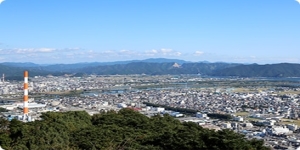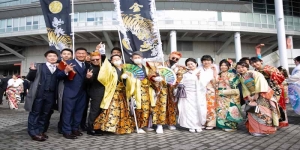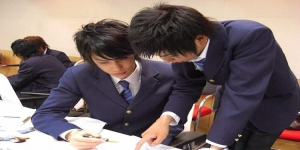Buddhism in Japan from Its Spreading to Today - Second Part -
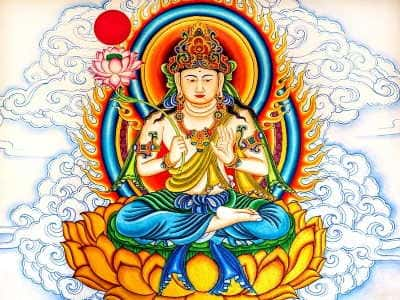
We continue with the second part of our exploration of Buddhism in Japan from its origins to the present day. We'll analyze it through its diffusion, the passages and the characters that have allowed such deep integration with the Japanese.
Images and knowledge.
The Japanese society of the time (around the 552 a.d) was poorly literate and therefore to communicate the diffusion of many novelties, especially if these would have affected their way of life, they used images and this system was also used by Buddhism, basing its spread on rites, sculptures, paintings and architecture of the sacred.
The temple, which housed the statue of the Buddha, became the nerve center of every liturgy, the enigmatic elegance of the statue and its symbolism emanated an aura of well-being on the faithful gathered in prayer. When these statues were placed in the temple were celebrated solemn ceremonies because the Illuminato, which the statue would go to represent, possessed and animate it to give inspiration, serenity and welfare to the population and before it the monks would have read the readings of the sutras, played sacred music, they would have meditated and taught the faithful the Way, and where to bring their offerings.
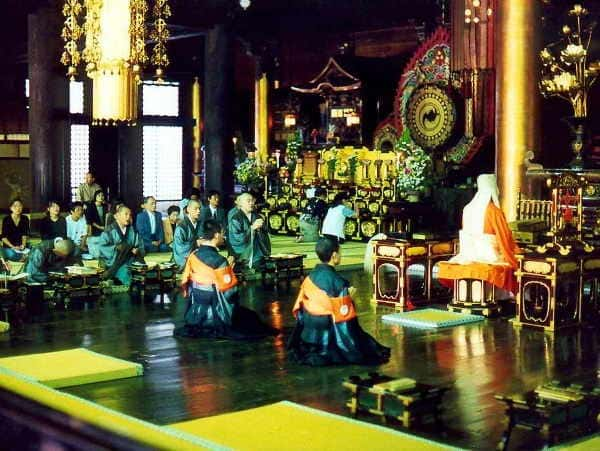
Time, passing, gradually and continuously increased the knowledge of the doctrine in the population but the monks, intent on meticulously studying the sacred texts to fully understand the theoretical complexity, didn't really like the method of dissemination with systems only to images because these they were based on a purely aesthetic, emotional language, which was good for strengthening the faith but was not at all useful for what concerned the Knowledge. It often happened that the monks denounced the images as a representation of mediation between the real and the unreal of illusions and therefore decided for a very close control of the sacred iconography with the creation of a code of targeted symbols, but this didn'tt prevent Buddhist images to be able to improve and increase their value of expressive richness.
The statue of the Buddha is part of those images, powerful, that the faithful observes, he sees the Buddha with the thirty-two major signs and the eighty minor of spiritual perfection, the body covered with gold, precious metal and that is not attacked by rust and this confirms its eternal, absolute, incorruptible nature and bearer of light and truth in the world. But all this is also used to use abstract symbols such as the lotus flower, the tree of enlightenment, the throne of supreme royalty, the wheel of Dharma, which go to recall all of its most important moments of his earthly life, and all this was a vehicle made up of images that practically took the faithful by the hand, accompanying him on his journey in search of the truth.
According to the Buddhist iconography, the Buddha represented with human features expressed an idea already rooted in the Japanese religious world that gave man a divine nature, that the absolute and the relative had a bond of profound identity, but that which it was more immediate as the message that emanated the statue was the pervasive sense of peace, of serenity, of calm transmitted by that light and enigmatic smile.
This gave to the traditional imaginary the idea that the divinity possessed an absolutely benevolent nature ready to succor the man, in all its weaknesses, with its miraculous powers and it is no coincidence that one of the most important religious centers, the Todaiji東大寺, guests Yakushi nyorai 薬 師 如 来, or Yakushiruriko nyorai 薬 師 瑠 璃 如 如 来, the Medicine Buddha and the merciful deeds that the Illuminati performed did not have to be sought in well-executed rites and therefore would have calmed him, but rather, to an action purely gratuitous, spontaneous fruit of his spiritual perfection.
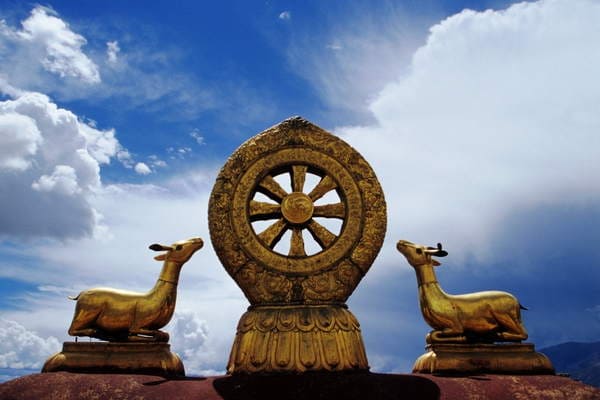
The spread of Buddhist sculpture and painting in Japan allowed to open and experiment a completely new aesthetic of the sacred, in fact, the ancient cults dedicated to the Kami were not represented with the images and the arrival of Buddhism meant that even the imaginary Shinto was involved to such an extent that it remained closely linked to it, a striking example of this new course is precisely the case of the God Hachiman in the US since it was one of the very first Kami to be depicted in a sculpture.
But not only was art influenced by Buddhism, architecture was also influenced by, for example, the pagoda, to 塔 the monument building that contains and preserves the relics of an Illuminati, had the task of recalling the greatness of the founder and make them feel more the memory, but some texts also explain that it was not only a place of veneration and worship for the remains of a holy body that contains, but given its shape, is taken as an indication towards the illumination rendered visible from the degree of perfection and quality of each level of its structure.
Some excavations carried out on the site of the Asukadera pagoda have highlighted the line of continuity between tradition and the innovation of the sacred architecture given that at the base of it have been found the remains of a treasure chest that went to contain the relics, but that the most important thing was the discovery under the central pylon of objects, bronze swords, mirrors, etc. that were part of archaic cults of Japan, archaic cults and pagoda, tradition and innovation, Japan traveled towards its social, religious and political metamorphosis.
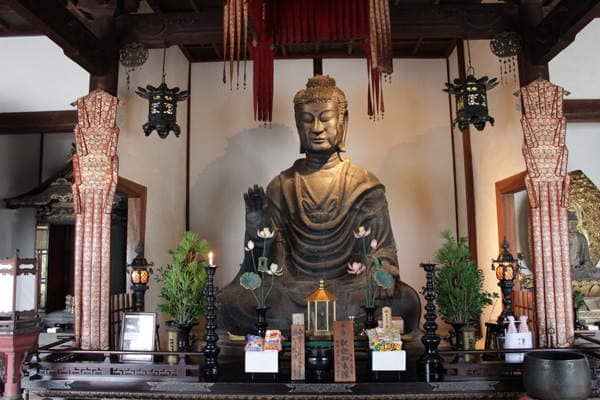 The Great Buddha of Asuka-dera 飛鳥寺
The Great Buddha of Asuka-dera 飛鳥寺
The Prince Shotoku 聖徳太子, Umayado no oji.
In the first part, it was mentioned to Prince Shotoku, but who was and what was his contribution to the dissemination of Buddhism. She was nephew of the sovereign Suiko and was proclaimed regent to the throne in 592, we are in the Asuka Period, and assumed a mythical, semidivine dimension, is described as a fervent Buddhist and in Nihonshoki 日本 書 紀 it is said that Prince Yamashiro, son of Prince Shotoku , he said of him: << When my father was on the verge of death he told us "Avoid all evil, do all kinds of good" >> which was the quotation of a very famous Buddhist expression.
His figure became so important in the Japanese imagination because at that time Buddhism was expanding and needed an imported figure to divulge it and to ferry a magical, ritualistic religion, managed in the old optics of the clans to a street of universal salvation, taught, practiced and valued by an enlightened ruler.
The figure and memory of Shotoku Taishi was magnified to make him the Buddhist ruler who through symbolic analogies was going to renew the myth of the first divine ruler on earth, Ninja no Mikoto 瓊瓊 杵 尊, exalted and revered by the Shinto tradition. He was idealized as a wise ruler, a model of virtue for the subjects, a defender of peace and who united the knowledge of the Three Ways: Confucius, Buddha and Dao.
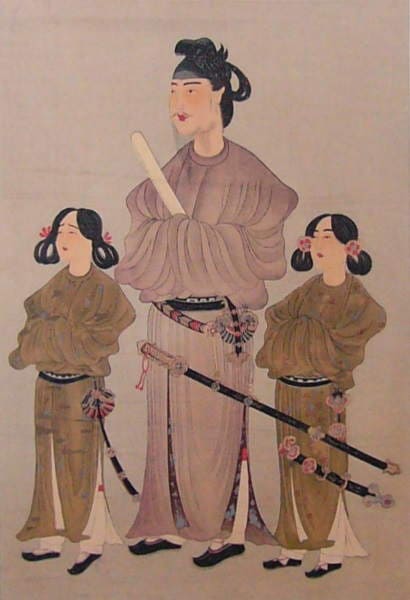 The Prince Shotoku Taishi 厩戸皇子
The Prince Shotoku Taishi 厩戸皇子
In Nihonshoki, it is mentioned that it was Prince Shotoku who established relations with the Chinese with official ambassadors in search of new religious texts, and new knowledge in the administrative and scientific fields. Always the first major reforms of the state are attributed to him composing "The Constitution of the 17 Articles, Jushichijo kenpo 十七 条 憲法" where the Buddhist ideals are chosen as guiding principles that a sovereign must have for the good of his people, but was protagonist of another important text, the Sangyogisho 三 経 義疏, a commentary, which is divided into three texts Hokke Gisho 法 華 義疏, the Shomangyo Gisho 勝 鬘 経 義疏 and the Yuimagyo Gisho 維摩 経 義疏, the Sutra of the Lotus. These texts were then actually written all by the prince is not fully certified since some think that they were monks close to him to be the authors.
The fact remains that the exposure of these texts revealed a profound knowledge of the doctrine and the sutras that are commented were not taken at random because they all force on what are the fundamentals of the Buddhist religion especially the most famous Lotus Sutra which will be the source of inspiration for many teachers of thought. A situation has been created where the attractiveness of Buddhism is very strong because it teaches that enlightenment is attainable in this life as well as by monks as well as laymen, women and men as the nature of every being is inherently pure and in each of us there is the light of the Ultimate Truth.
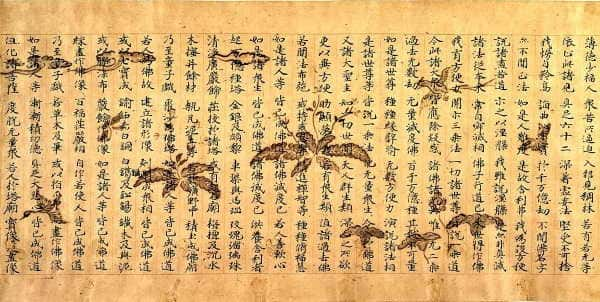 Part of the Lotus Sutra, a work kept at theTokyo National Museum.
Part of the Lotus Sutra, a work kept at theTokyo National Museum.

 English (United Kingdom)
English (United Kingdom)  Italiano (it-IT)
Italiano (it-IT) 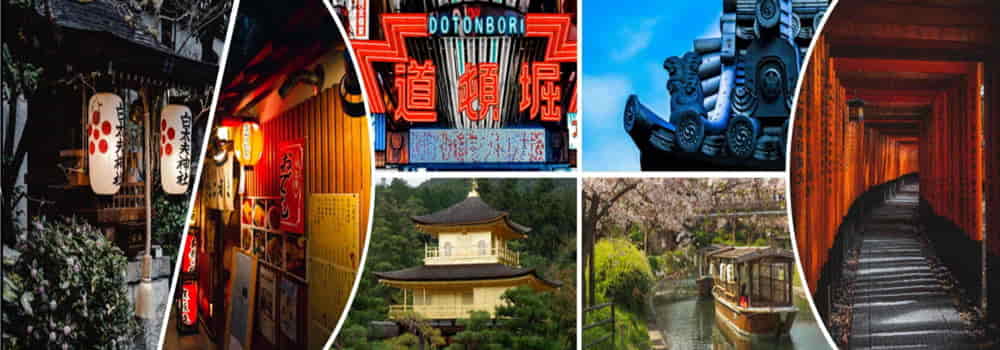
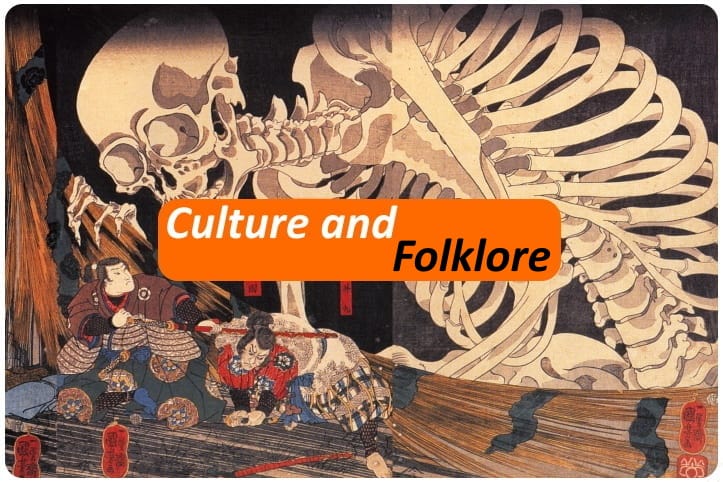




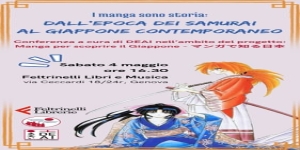
![[Review] Princess Toyotomiプリンセス トヨトミ](https://www.fukainihon.org//cache/mod_jt_contentslider/fdfb524f85518b9476158c79c8ea022f_328.png)
